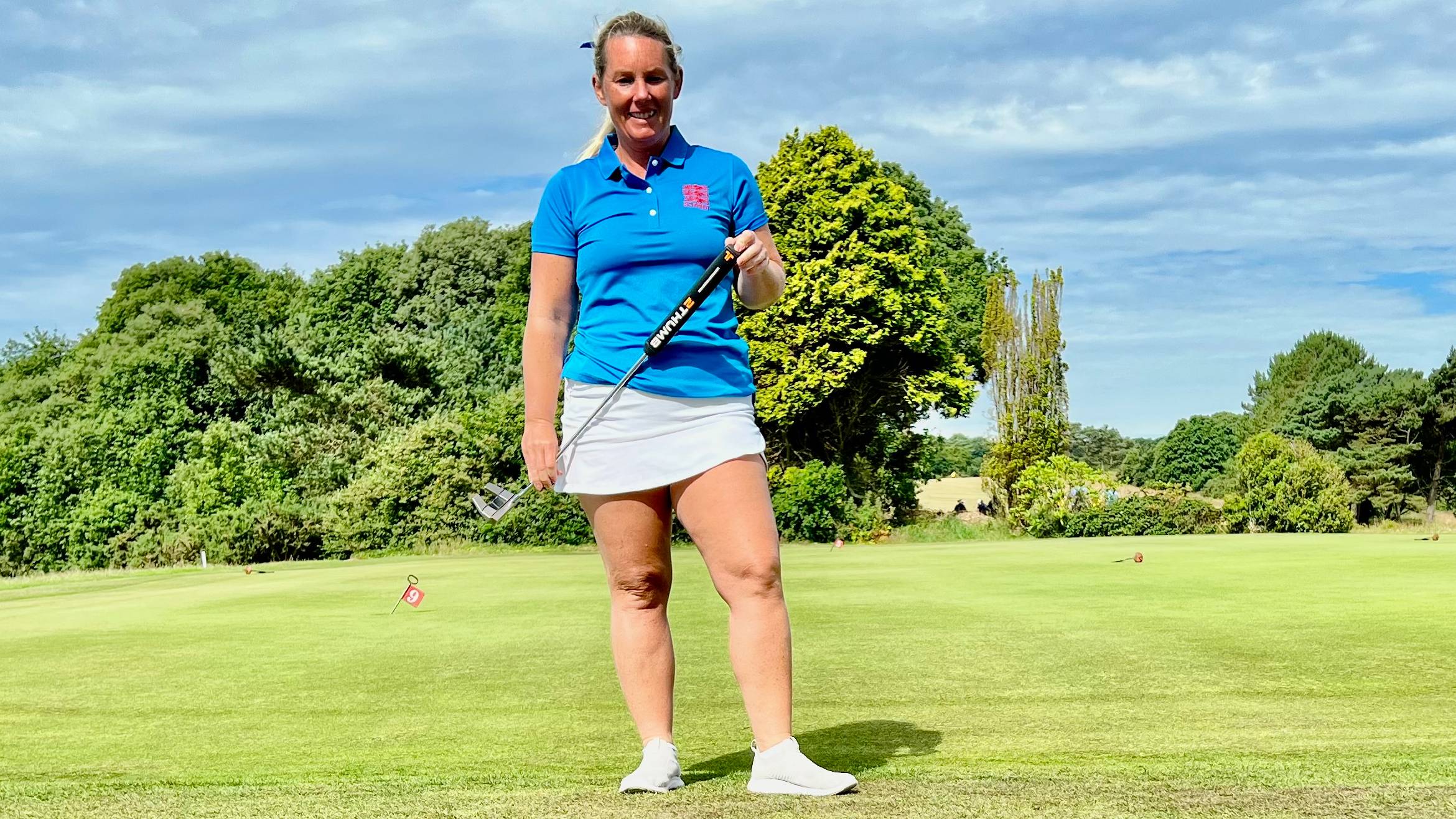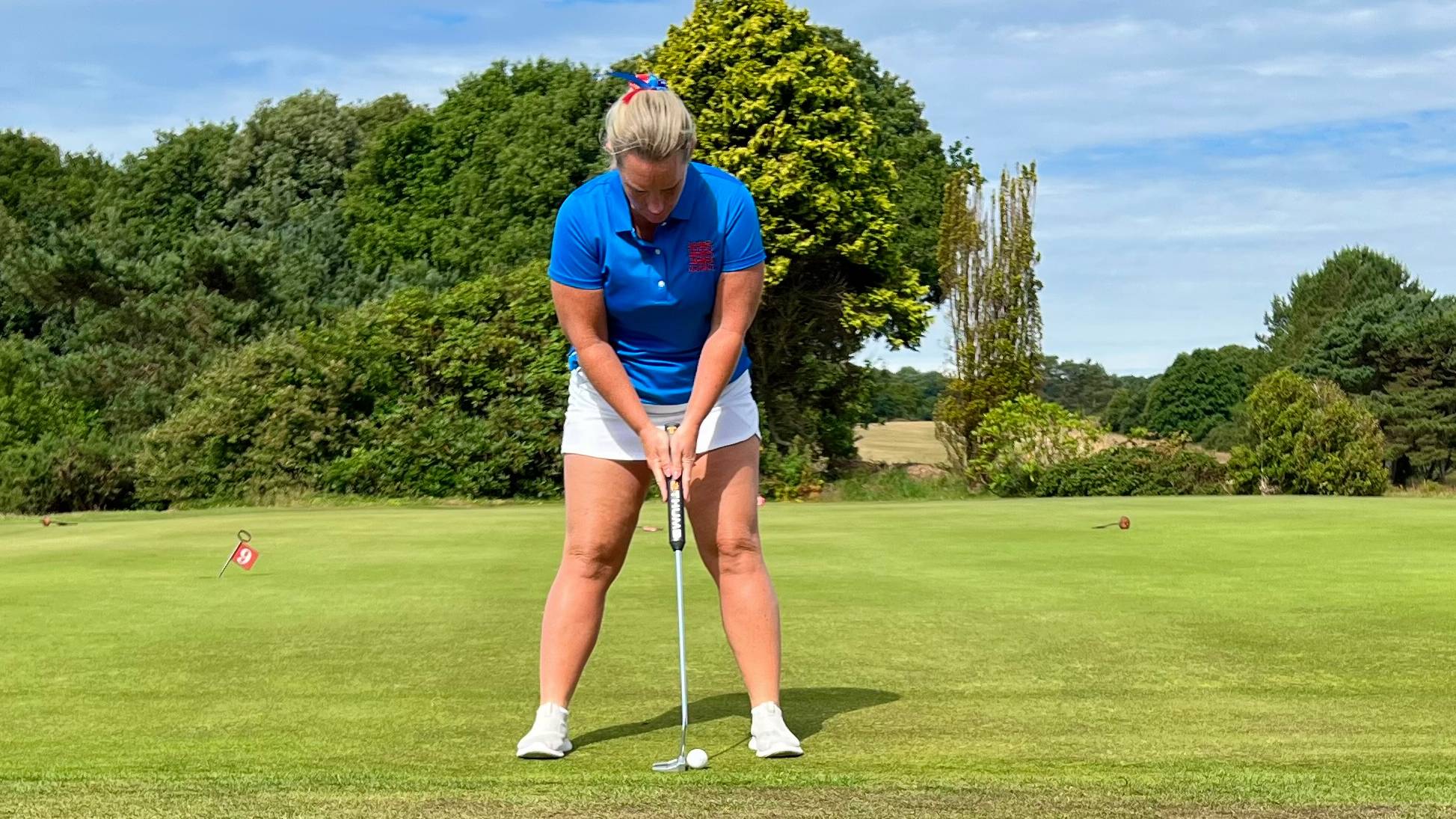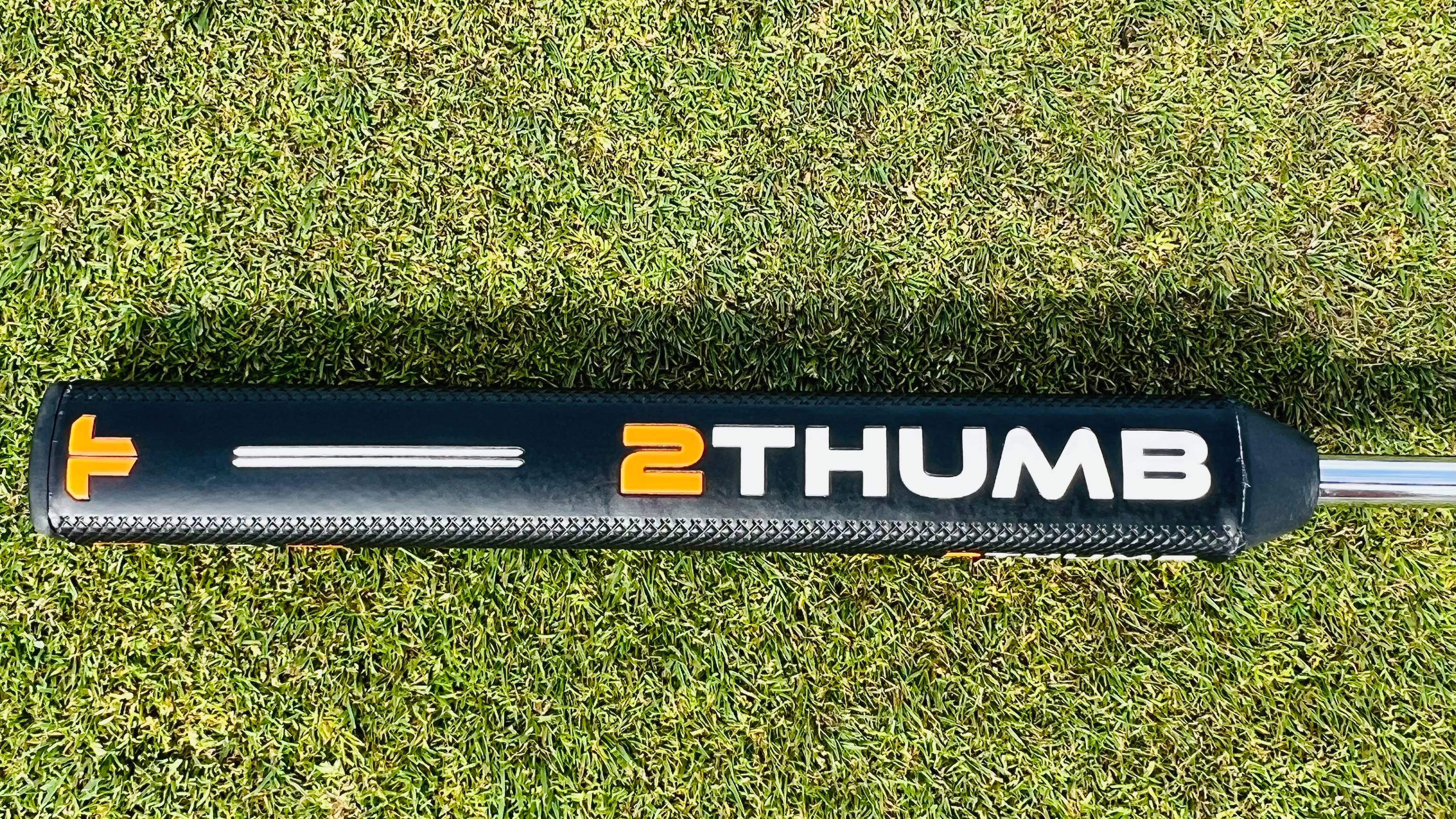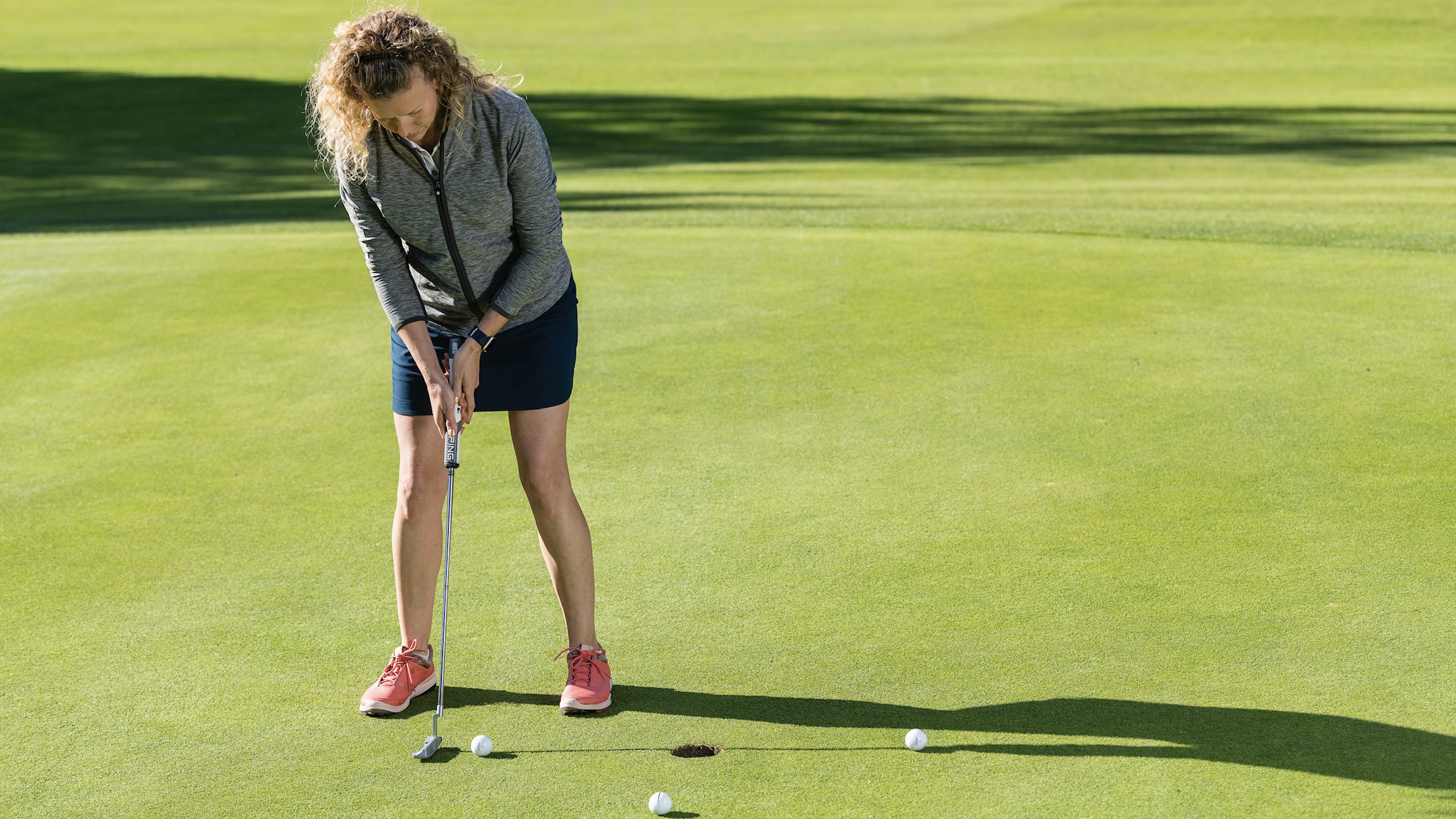'A £30 Putter Grip Changed Everything - My Putting Stats Prove It'
Single figure golfer Carly Cummins on how an inexpensive change of grip transformed her stroke and her score


I went through a torrid time with my putting last winter. Although the wet weather and course conditions undoubtedly played a role in my inability to roll the ball truly and successfully into the hole, my confidence took a hit. Where I would normally two-putt, the dreaded three (and dare I say it) even the occasional four-putt crept onto my scorecard.
It was mainly those critical short putts that I was missing. I know this because I keep my putting statistics. This is a simple and straight-forward task to do. Just add the putts tally in the empty column on your scorecard. Count the number of putts you take, jot them down next to your score and add up your total at the end of the round.

Any decent golfer should be averaging less than 32 putts a round. Two putts a hole (36) is acceptable for the mid-high handicapper, but anything above this is a complete waste of shots. I was averaging 40 putts a round. Shot Scope, Golf Monthly's official data partner, highlights why holing out for some (or failure to hole out) can be destructive to their scorecard.
Shot Scope data reveals that 10 handicappers make 94% of putts inside the three-foot range. This reduces to 89% made by a typical 20-handicapper and 85% by a player off a handicap of 30 or higher. Nevertheless still a really high percentage across the board.
But faced with a putt between three and six feet in length these statistics dramatically change. The low handicapper now only holes 57% of these putts, the 20 handicapper holes 48% and the high handicapper (off 30 plus) holes just 40%.
Armed with this knowledge I knew that I was failing to achieve where others at my ability level were holing many more short putts. I had to do something, but I still liked my putter, so I invested in a new putter grip instead, and wow what a difference it made.
When I took my putter into the pro shop to have the grip changed, the fitter told me that my old putter grip had twisted out of position on the club. Effectively, when I was trying to line the putter up square to the hole the grip was twisted, throwing my hands and the whole stroke out of alignment.
Subscribe to the Golf Monthly newsletter to stay up to date with all the latest tour news, equipment news, reviews, head-to-heads and buyer’s guides from our team of experienced experts.

Carly Cummins opted for a 2 Thumb putter grip
It was also so old and worn out that it was shiny and slippery. On those wet winter days it was literally sliding out of my hands! I’ve kept the same style of putter grip (the chunky two-thumb, other examples include the Super Stroke) as this is my feel preference. But I chose a grip with a more defined profile that now sits better in my hands. I instantly felt like a new woman on the putting green.
The other thing I did was go for a slightly lighter weight grip to allow me to swing the putter back longer and with more fluidity, as I was struggling to get my long distance putts up to the hole. You can do the opposite and get weight added in your putter grip if you choose.
Back to the Shot Scope data, if you look at it in detail you’ll see success on the putting surface revolves around proximity. The difference between putts made from a distance inside three feet and those from three to six feet is staggering.

For the lower handicapper like me (playing off 10 or below), the likelihood of holing these putts drops by just over a third from the distance beyond three feet. For the average 20 handicapper, the likelihood drops from almost a dead certainty, 9 in 10, to roughly a 50/50 chance - a toss of a coin almost.
For higher handicappers, they are twice as likely to hole from zero to three feet versus three to six feet (85 percent versus 40 percent). Although the drop off is significant, it should help with expectation management; putts from three to six feet are by no means a gimme, so don’t get frustrated if you aren’t holing them all.
Whilst I didn’t have a custom fit for my new putter grip on this occasion, as I knew that I wanted something similar in style to my existing grip, I would suggest that most golfers would benefit massively from the investment of going for a proper putter fitting. You’ll be amazed at just how much the way you hold the putter in your hands can contribute to your ability to aim and the effectiveness of your stroke.
At the end of the day, I spent £30 on a new putter grip and I’ve taken 10 putts off my scorecard. My average is back down to 30-32 putts again. I’m consistently shooting scores in the seventies and my confidence is back. My handicap index has reached its lowest point in the last two years (2.3) - all by changing something very simple, my putter grip. So go on, try it. It could be the cheapest most transformational thing you do for your game.

Carly Frost is one of the golf industry’s best-known female writers, having worked for golf magazines for over 20 years. As a consistent three-handicapper who plays competitive club golf at Parkstone and the Isle of Purbeck courses in Dorset every week, Carly is well-versed in what lady golfers love. Her passion for golf and skill at writing combine to give her an unbeatable insight into the ladies game.
Carly’s role at Golf Monthly is to help deliver thorough and accurate ladies equipment reviews, buying advice and comparisons to help you find exactly what you are looking for. So whether it’s the latest driver, set of irons, golf ball, pair of shoes or even an outfit, Carly will help you decide what to buy. Over the years she has been fortunate to play some of the greatest courses in the world, ranking Sea Island, Georgia, USA, among her favourite golf resorts. Carly's aptly-named son Hogan is already hitting the ball as far as mum and will undoubtedly be a name to watch out for in the future.
Carly is a keen competitor and her list of golfing achievements are vast. She is a former winner of the South West of England Ladies Intermediate Championship, a three-time winner of the European Media Masters and she once beat an entire start-sheet of men to the title of Times Corporate World Golf Champion. She has played for both the Dorset and Surrey County Ladies first teams and is known for her excellent track record at matchplay.
Carly holds the ladies course record (68) at her home club Parkstone and her lowest competition round (seven-under-par 65) was carded in the pro-am of the Irish Ladies Open at Killeen Castle, playing alongside Solheim Cup superstar Anna Nordqvist. Although her current handicap index has crept up to 3.7 since Covid she has her sights firmly set on achieving that elusive scratch handicap and hopefully playing for her country when she’s 50.
Carly’s current What's In The Bag?
Driver: Callaway Epic Max, 10.5°
Fairway wood: TaylorMade SIM2, 15°
Hybrids: Titleist TS2, 19°, 21°, 24°
Irons: Mizuno JPX900, 5-PW
Wedges: Cleveland RTX, 52°, 56° and 58°
Putter: Scotty Cameron Futura X5
Ball: 2021 Callaway Ladies SuperSoft
You must confirm your public display name before commenting
Please logout and then login again, you will then be prompted to enter your display name.